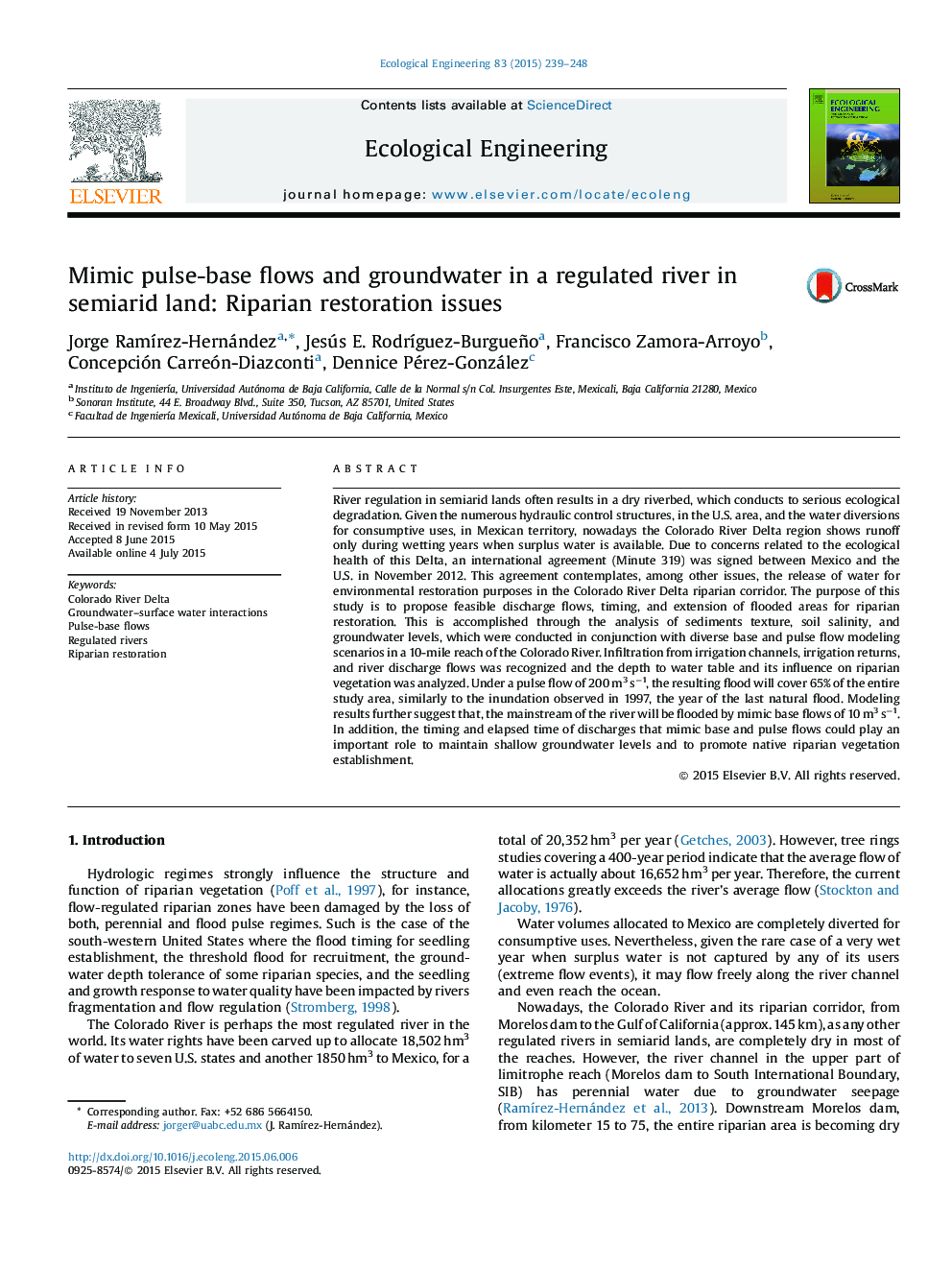| Article ID | Journal | Published Year | Pages | File Type |
|---|---|---|---|---|
| 4388872 | Ecological Engineering | 2015 | 10 Pages |
River regulation in semiarid lands often results in a dry riverbed, which conducts to serious ecological degradation. Given the numerous hydraulic control structures, in the U.S. area, and the water diversions for consumptive uses, in Mexican territory, nowadays the Colorado River Delta region shows runoff only during wetting years when surplus water is available. Due to concerns related to the ecological health of this Delta, an international agreement (Minute 319) was signed between Mexico and the U.S. in November 2012. This agreement contemplates, among other issues, the release of water for environmental restoration purposes in the Colorado River Delta riparian corridor. The purpose of this study is to propose feasible discharge flows, timing, and extension of flooded areas for riparian restoration. This is accomplished through the analysis of sediments texture, soil salinity, and groundwater levels, which were conducted in conjunction with diverse base and pulse flow modeling scenarios in a 10-mile reach of the Colorado River. Infiltration from irrigation channels, irrigation returns, and river discharge flows was recognized and the depth to water table and its influence on riparian vegetation was analyzed. Under a pulse flow of 200 m3 s−1, the resulting flood will cover 65% of the entire study area, similarly to the inundation observed in 1997, the year of the last natural flood. Modeling results further suggest that, the mainstream of the river will be flooded by mimic base flows of 10 m3 s−1. In addition, the timing and elapsed time of discharges that mimic base and pulse flows could play an important role to maintain shallow groundwater levels and to promote native riparian vegetation establishment.
